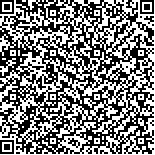| 摘要: |
| 从皱纹盘鲍胚胎样本中分离RNA并构建了cDNA文库。分别收集孵化8、10和12h的皱纹盘鲍胚胎,用抽滤除菌的海水反复悬浮胚胎,将这3个发育阶段的胚胎样本等量混合后用TRIZOL试剂提取总RNA,将提取物用酚氯仿异戊醇再抽提2次,分离获得高质量的总RNA。从总RNA中分离mRNA,构建了皱纹盘鲍混合胚胎的cDNA文库,未扩增胚胎文库的滴度为5.0×106pfu/ml,重组率为94.12%,插入片段均大于400bp,70.6%克隆的插入片段分布在1000—1500bp之间,扩增后的文库滴度为3.06×109pfu/ml。 |
| 关键词: 皱纹盘鲍 胚胎 cDNA文库 基因表达 |
| DOI: |
| 分类号: |
| 基金项目:国家自然科学基金项目,30271018号;国家863计划项目,2004AA626070号;青岛市自然科学基金项目,032JZP9号资助 |
附件 |
|
| ISOLATION OF RNA AND CONSTRUCTION OF FULL-LENGTH CDNA LIBRARY OF EMBRYO HALIOTIS DISCUS HANNAI INO |
|
LIU Xiao1, ZHAO Min2,3, GAO Qi-Kang4, ZHANG Guo-Fan1
|
|
1.Institute of Oceanology, Chinese Academy of Sciences, Qingdao 266071;2.Institute of Oceanology, Chinese Academy of Sciences, Qingdao, 266071;3.Graduate School, Chinese Academy of Sciences, Beijing, 100039;4.Zhejiang University, Hangzhou, 310029
|
| Abstract: |
| In order to clone genes from embryos and compare gene expression differences in different developing stages of Pacific abalone, Haliotis discus hannai Ino, technology of sampling and RNA isolation from embryos were developed, and full length cDNA expression library of whole embryos of the abalone was reported in this paper.
Wild adult Pacific abalones from Japan have been used as bloodstock in this experiment. The animals were maintained in China for almost 10 months under natural condition and fed with fresh Laminaria japonica every day. Spawning was carried out in October 2002 for matured abalones. The animals were exposed to air at 75%–80% moisture for desiccation in darkness at 20°C for 30min. Then each single individual was put into at 20L tank separately and treated with 10L of ultra-violet-irradiated [300mW/(h?L)] seawater at the temperature of 23°C. The UV-treated seawater in each tank was renewed every 30min until spawning. Artificial fertilization was conducted at 20°C with the oocytes and sperms from 3 donor parents. After inspecting under a light microscope, three females with high quality oocytes were selected and the eggs isolated from each abalone were combined. Eggs were filtrated by a plankton net to remove impurity such as secretion from the donor abalone. Keep the tank still and let the eggs settle down on the tank bottom, then removed the supernatant carefully and suspended the eggs with fresh seawater at 20°C for fertilization. Meanwhile, three males were selected and their sperms were combined in the same way as the ooyctes, then diluted the combination by fresh seawater at 20°C. The diluted sperm was added to the egg suspension to a density of about 10 sperm per egg and mixed them gently. 10 minutes after fertilization, zygotes were washed with fresh seawater. Embryos were incubated at 20°C at the density of 20 eggs in each milliliter by periodical washing at every 40 minutes till trochophore stage. Embryos were respectively sampled at 8, 10, and 12 h after fertilization. Embryos were collected with sterilized screen and transferred to a sterilized beaker, suspended in 100ml sterilized seawater and washed with 100ml sterilized seawater for at least five times. Then collected the embryos on a sterilized screen and washed with 500ml sterilized seawater. Seawater was removed from the embryo samples completely with sterilized filter papers. Glass instrument were baked at 150°C for 4 hours, others such as screens were treated with 70% ethanol (in sterilized water). Seawater was sterilized by filtrating through a 0.22 μm filter. 0.5g embryos at each developmental stage were transferred to one 15ml RNase free polypropylene tube, 10ml of TRIZOL reagent at 0°C was added to each tube. Shook the tube gently until embryo tissues were well separated among the TRIZOL reagent, then kept the samples in liquid nitrogen. 5ml of embryo samples from each developmental stage was mixed, and the mixture was used to isolate total RNA as the instruction of TRIZOL reagent manual. The extraction was re-extracted twice with acid phenol reagent to remove proteins completely.
The cDNA library of whole embryos was established by SMART technique using the KT ripEX2 as the vector. It was named as HD-emblibrary.
The titer of unamplified cDNA library was 5.0×106 pfu/ml with a recombinant rate of 94.12%, and titer of amplified one was 3.06×109 pfu/ml. The length of cDNA inserts range from 400 to 1500 bp. These results indicated that we have established the HD-emblibrary in high quality, and it is ready for use in gene clone and expressed sequence tags analysis. |
| Key words: Haliotis discus hannai Ino, Embryo, cDNA library, Gene expression |
